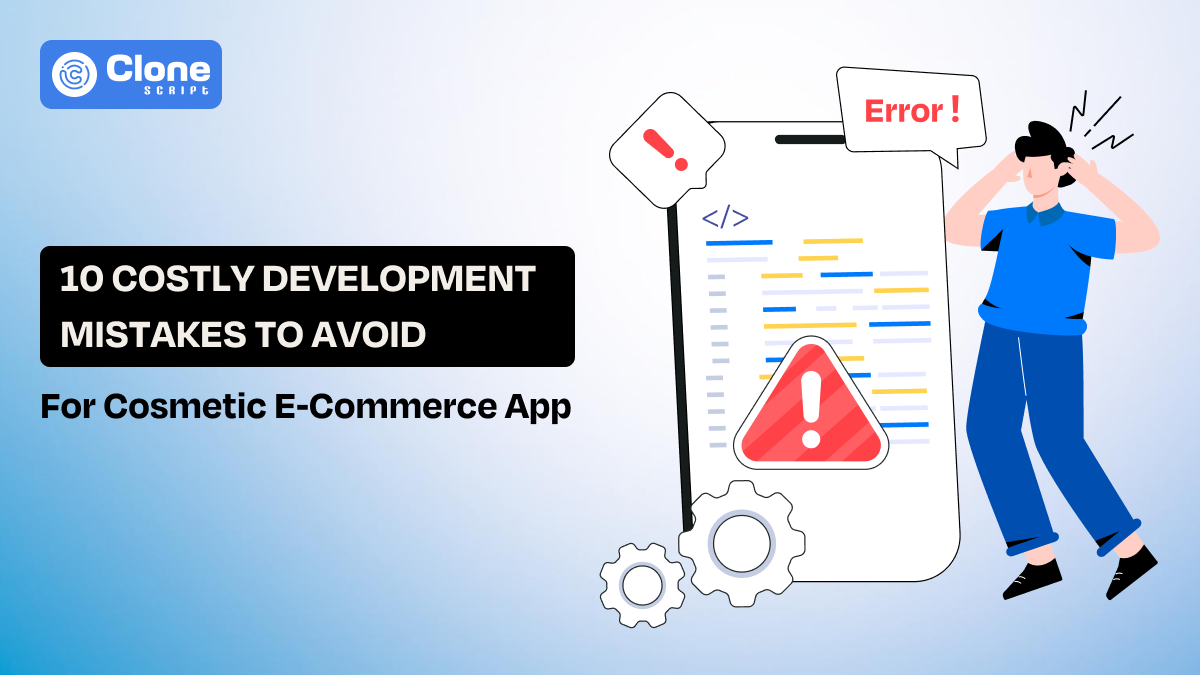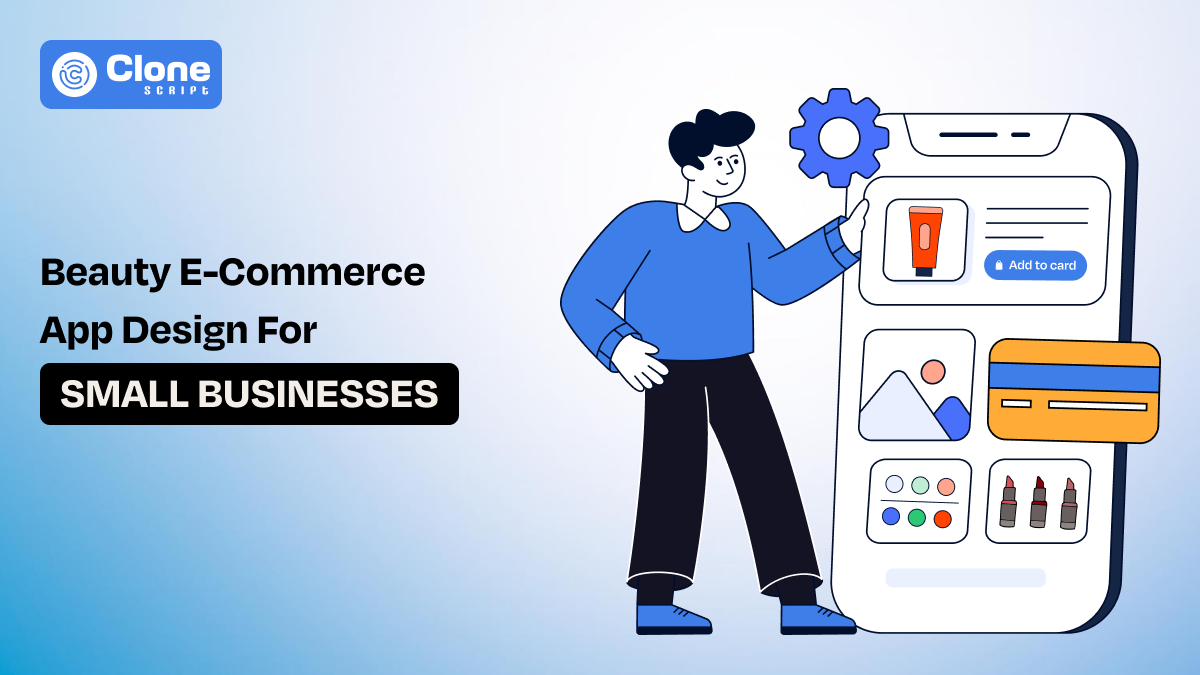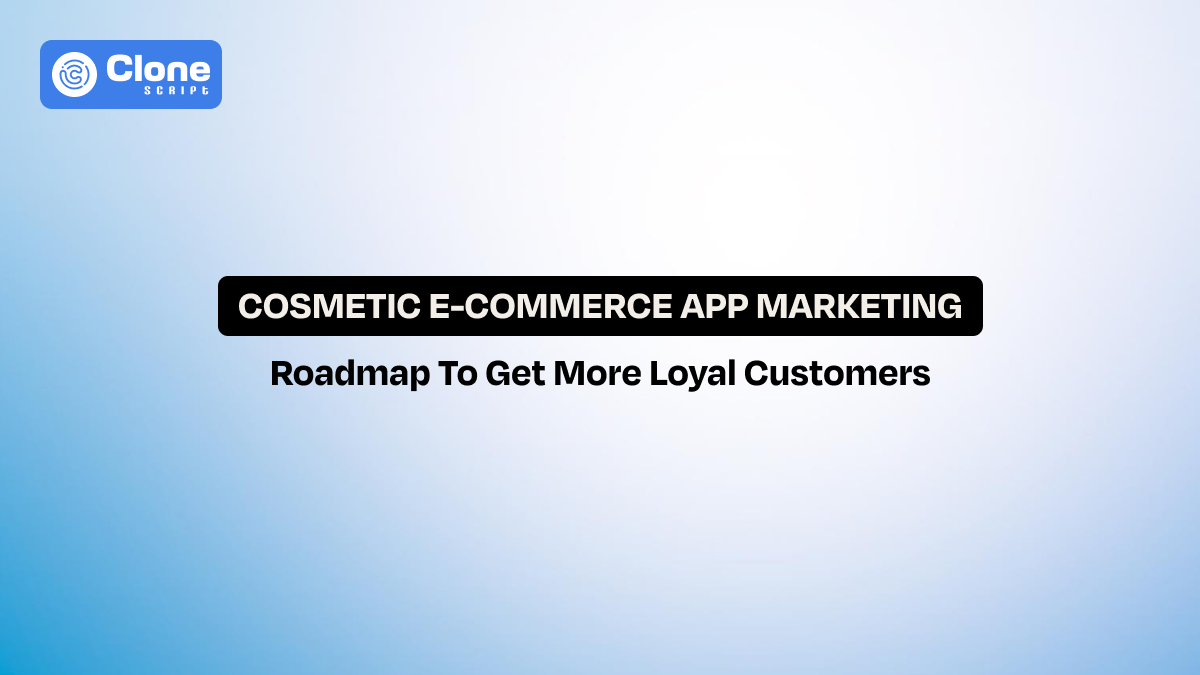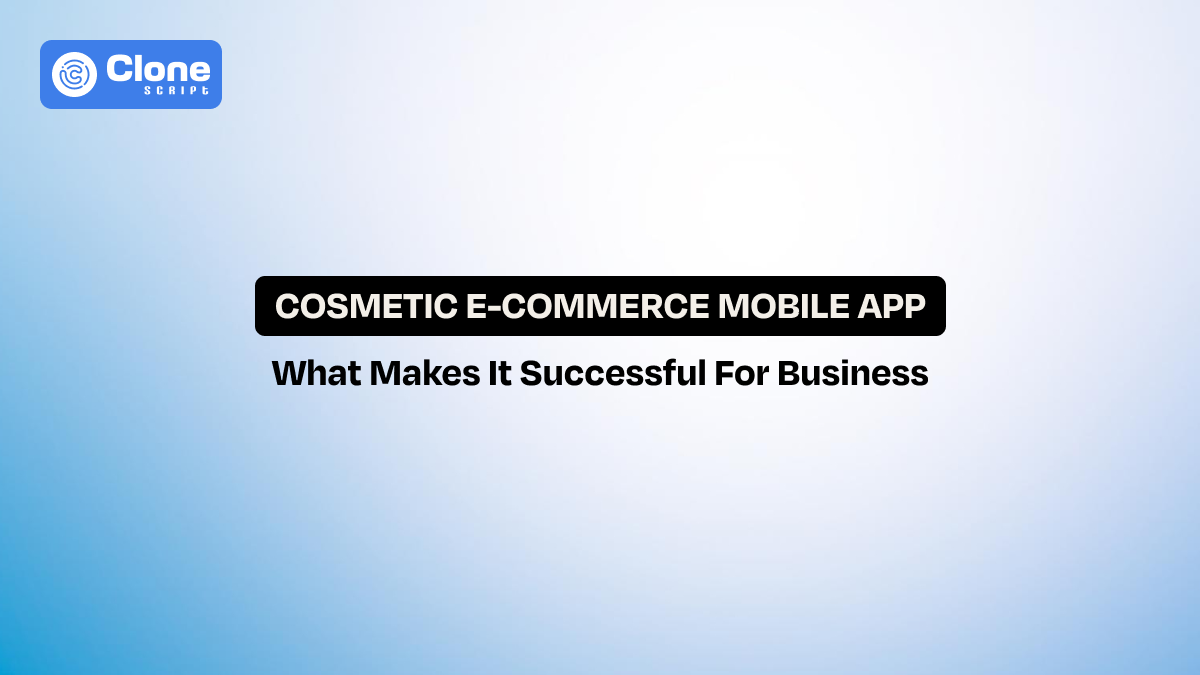10 Common Mistakes to Avoid in Cosmetic E-commerce App Development
In the world of digital beauty retail, where first impressions define brand loyalty, even a one-second delay or a confusing layout can cost a sale.
What?
Yes. It’s true.
Research shows that 70% of users abandon an e-commerce app due to poor usability.
The cosmetics industry, known for its visual appeal and emotional connection, suffers even more from these oversights. A cosmetic e-commerce app is a mirror of a brand’s elegance, trust, and creativity.
Unfortunately, many development teams, in their rush to innovate, stumble upon the same recurring cosmetic app mistakes. These mistakes don’t just reduce conversions; they slowly lose the trust your users have in your brand.
Let’s explore how to prevent these costly app development pitfalls and build an app that captures not only attention but also loyalty.
Why a Cosmetic E-commerce App Must Be Feature-rich and User-friendly?
The best cosmetic e-commerce app quality is that it successfully offers a digital store experience. Users expect beauty apps to replicate the elegance, comfort, and excitement they’d feel in a high-end beauty boutique.
An elite cosmetic app must balance design, usability, and performance. Every tap, scroll, and product image should feel effortless. When beauty seekers navigate your app, they should sense luxury and convenience at every corner.
A feature-rich, user-friendly app has:
-
Builds emotional engagement: Personalized recommendations and AR try-ons create delight and confidence.
-
Drives conversions: Smooth navigation and intuitive flows reduce bounce rates and increase purchases.
-
Strengthens brand identity: Visual harmony, consistent design, and responsive performance reinforce credibility.
Ignoring these essentials often leads to the most frequent cosmetic e-commerce app development mistakes, which can make even the most ambitious projects fail.
10 Common Mistakes to Avoid When Developing a Cosmetic E-commerce App
Here is the list of costly mistakes that usually happen in cosmetic and beauty app development:
1. Skipping Market and User Research.
Skipping research is one of the most damaging mistakes. Without understanding your audience’s buying motivations, behaviors, and expectations, you risk building features that don’t resonate.
The beauty market thrives on emotion and trust, so knowing what inspires your users, whether it’s eco-conscious packaging or AR try-ons, is essential.
Market insights help teams design meaningful, user-centered experiences that align with real needs.
What to focus on:
-
Conduct market and competitor research before design.
-
Use surveys to understand buying motivations.
-
Identify target personas and their emotional drivers.
-
Avoid assumptions; base features on verified insights.
Following these tips will make the application user-friendly and adaptive rather than lost in the Play Store.
2. Poor UI Choices That Don’t Reflect Brand Personality.
Design defines identity.
Poor UI decisions are a leading mobile app UX issue that makes beauty apps feel disconnected from their brands.
When your interface fails to capture the brand’s personality, like luxurious, playful, or natural, what does it result in?
It confuses users and downgrades emotional connection.
Keep note, every visual element should express brand values and create harmony between aesthetics and usability. Beauty shoppers connect first through what they see and feel.
That’s why the beauty app design has to be made with user interfaces, especially ready-to-use premium Figma UI kits.
What to focus on:
-
Use colors, fonts, and icons that reflect your brand essence.
-
Maintain consistency across every app screen.
-
Avoid generic free templates; build a signature design identity.
-
Let visuals evoke your brand’s emotional promise.
3. Confusing Navigation and Category Flow.
Even beautifully designed apps fail when users can’t find what they’re looking for. Confusing navigation is one of the most common beauty app user experience challenges.
In the online beauty industry, customers want instant access to the right product. If menus are cluttered or categories unclear, they’ll simply abandon the app.
So, what is the best way to prevent this issue?
Clean structure and intuitive navigation ensure smooth exploration and better conversions.
What to Focus on:
-
Organize categories logically, by product type or concern.
-
Keep menus short and intuitive. Don’t make it confusing.
-
Add filters for brand, price, and skin type. This improves the conversions.
-
Use predictive search and breadcrumb navigation. It drives preferred actions from customers.
4. Weak Product Presentation.
A cosmetics brand's success rate depends on visual appeal.
Weak presentation is among the most unrequired beauty product app errors that reduce sales and user confidence.
What are the reasons for it?
Poor images, vague descriptions, and missing reviews break the emotional link between buyer and brand.
High-quality visuals and clear product stories drive engagement, trust, and conversions. Beauty shoppers want to see and feel the product before buying.
What to Focus on:
-
Use high-resolution, color-accurate images. This creates trust and professionalism in the brand.
-
Add videos, 360° views, or AR try-ons. To reduce the cart abandonment rate, this feature in a cosmetic product shopping app brings more conversions.
-
Write detailed yet concise descriptions. For getting less common inquiries, the clarified descriptions help.
-
Include authentic customer reviews and testimonials. Creating trust in your products and customer feedback is useful.
5. Neglecting Speed and App Optimization.
Aesthetic brilliance can’t compensate for lag.
Many developers overlook cosmetic e-commerce app performance. This leads to frustration and drop-offs.
As mentioned earlier, a single second of delay reduces user satisfaction.
Speed optimization isn’t just technical. It’s psychological. A fast, fluid app conveys professionalism and reliability, which matter deeply in beauty commerce.
Also, performance defines how premium your brand feels to customers.
What to Focus on:
-
Compress images without compromising quality. Use WebP and PNG images.
-
Implement caching and optimize backend APIs. Check if the caching caused poor UX, then fix it.
-
Test load times under varying network conditions. This will help to understand what the actual user can experience.
-
Regularly monitor performance analytics. Find what the results app looks like, download, and usage, after the fix.
6. Forgetting Personalization and Recommendations.
Beauty is personal, and so your app should be too.
Ignoring personalization is one of the worst pitfalls in beauty shopping app development.
Generic experiences feel cold and forgettable, while tailored recommendations show empathy and understanding.
From suggesting shades based on skin tone to curating seasonal kits, personalization turns an app into a beauty advisor.
What to Focus on:
-
Use recommendation engines for product suggestions. This can turn a brand into a relevant platform where users get only what they need.
-
Customize content based on user history. Showcasing the products and tutorials creates brand recognition.
-
Highlight trending or similar products. To attract more customers to the app represents what’s currently in the market that many prefer. It defines the brand as active.
-
Make personalization seamless but not promotional. Helping customers rather than making sales works perfectly.
7. Complicated Signup and Checkout Flow.
A tedious sign-up or checkout is a common checkout problem that destroys conversions.
Beauty shoppers expect elegance, not effort.
Overly long forms or multiple payment steps create frustration.
Streamlined processes reflect the convenience and sophistication your brand promises. It turns curiosity into confident purchase decisions.
What to Focus on:
-
In e-commerce mobile app development, simplify onboarding with one-tap or social logins. Don’t make the registration form too long.
-
Offer guest checkout options. To improve conversion rates, this works.
-
Enable saved payment methods securely. For completing the checkout in less than a minute, it is useful.
-
Keep checkout to a minimum, intuitive steps. When customers get the complete checkout message with minimal effort, they will prefer to come back.
8. Not Tracking Data and User Behavior.
Failing to analyze real-time data is one of the biggest cosmetic e-commerce app mistakes.
Without analytics, you can’t see where users struggle, what features they love, or where they drop off.
Data is the foundation of continuous improvement. It helps you enhance experiences and target features that matter most.
What to Focus on:
-
Implement tools to track engagement and retention.
-
Analyze click paths and cart abandonment rates.
-
Use insights to refine design and marketing.
-
Base updates on factual behavioral trends.
9. No Testing on Real Devices.
QA & Testing exclusively on emulators leads to inaccurate results and major mobile performance issues for beauty apps post-launch.
Real users interact under different conditions—varied screen sizes, OS versions, and connection speeds. Without real-device testing, you risk hidden flaws that disrupt user trust and degrade app ratings.
What to Focus on:
-
Test on multiple real devices and OS versions.
-
Check layout, animations, and loading speed.
-
Evaluate usability under poor network conditions.
-
Use feedback from beta testers to fix early issues.
10. Ignoring Post-launch Support and Updates.
A beauty app’s success doesn’t end at launch—it evolves through maintenance.
Ignoring updates or fixes is one of the gravest beauty app compliance mistakes. Continuous support ensures your app remains secure, competitive, and user-friendly. Regular updates reflect care, attention, and long-term commitment, qualities that beauty consumers value.
With this, your app becomes a complete hub for shopping for beauty products and creating a luxury experience.
What to Focus on:
-
Schedule regular updates for bug fixes and improvements.
-
Add features based on user feedback.
-
Maintain app security through audits.
-
Refresh design elements to match beauty trends.
In short, you can invest in marketing for your cosmetic app. So, the application doesn’t lose its identity and keeps the brand reputation well-maintained.
How to Design and Develop a Cosmetic E-commerce App Easily and Quickly?
Creating a high-performing beauty app doesn’t have to be overwhelming. With modern templates and pre-built frameworks, development can be faster, cleaner, and smarter.
A perfect solution for developers is the Queen Beauty Care App Flutter Template. This ready-to-use template offers:
-
Elegant, brand-customizable UI.
-
Optimized cosmetic mobile app UX.
-
Streamlined navigation and checkout flows.
-
Built-in performance and compliance support.
Using such tools allows teams to focus on creativity, customization, and brand-specific enhancements instead of starting from scratch.
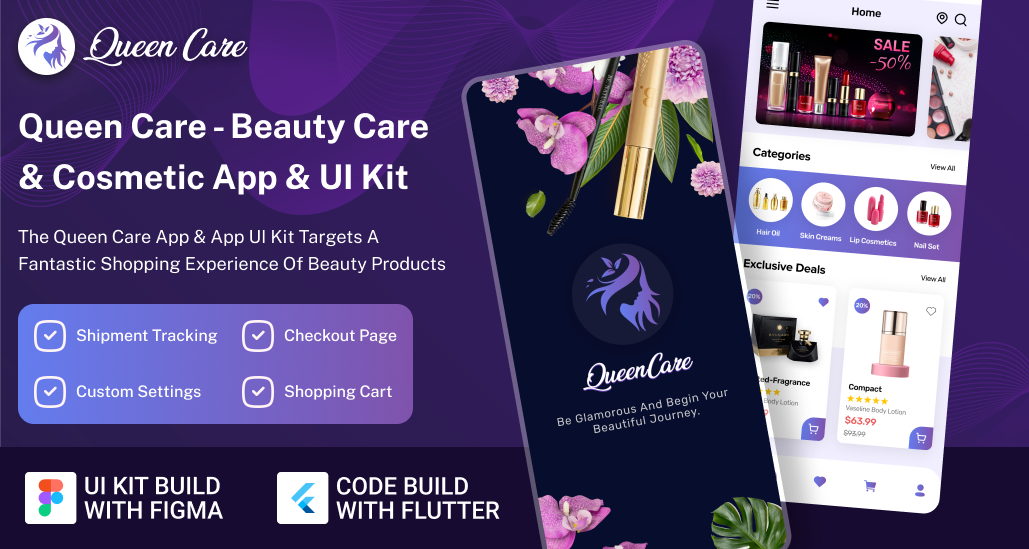
For brands aiming to stand out, speed and precision matter, and Queen Care E-commerce App Clone Script helps achieve both effortlessly.
Conclusion
The beauty industry thrives on emotion, trust, and aesthetics. When developing a cosmetic e-commerce app, the smallest mistake, a confusing button, a delay, or a missing recommendation, can disrupt the experience and reduce retention.
Focus on empathy-driven design, flawless performance, and post-launch growth—because in the digital beauty space, perfection isn’t optional, it’s expected.
FAQs
-
How can I ensure my app stays compliant?
Follow GDPR and CCPA, encrypt payment data, and include clear user consent for data use and ingredient disclosures to ensure cosmetic e-commerce app security and trust.
-
What testing strategies work best for beauty apps?
Combine real-device, performance, and usability testing to ensure responsiveness, accuracy, and smooth cosmetic e-commerce app performance across devices and network conditions.
-
What design trends are shaping beauty apps?
Minimalist layouts, smooth animations, AR features, and eco-friendly themes dominate modern cosmetic e-commerce app development for elegant, sustainable experiences.
-
How does social media integration help cosmetic apps?
It boosts engagement, enables content sharing, and promotes organic growth through user-generated content, increasing brand visibility and emotional connection.
-
What features are essential for a cosmetic e-commerce app?
Personalized recommendations, AR try-ons, secure checkout, reviews, and loyalty programs enhance user engagement and create a luxurious, seamless beauty shopping experience.
 BTC - Bitcoin
BTC - Bitcoin
 USDTERC20 - USDT ERC20
USDTERC20 - USDT ERC20
 ETH - Ethereum
ETH - Ethereum
 BNB - Binance
BNB - Binance
 BCH - Bitcoin Cash
BCH - Bitcoin Cash
 DOGE - Dogecoin
DOGE - Dogecoin
 TRX - TRON
TRX - TRON
 USDTTRC20 - USD TRC20
USDTTRC20 - USD TRC20
 LTC - LiteCoin
LTC - LiteCoin

